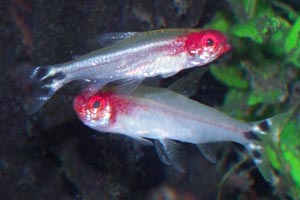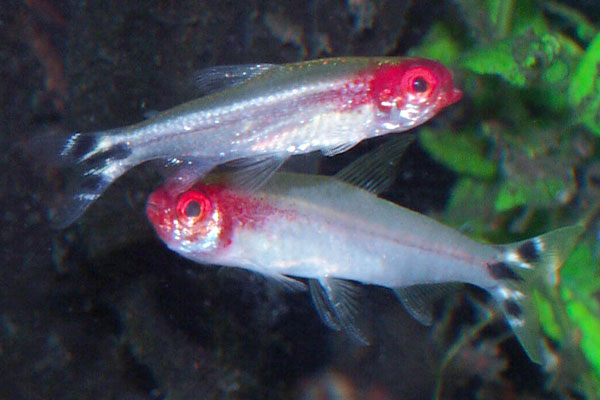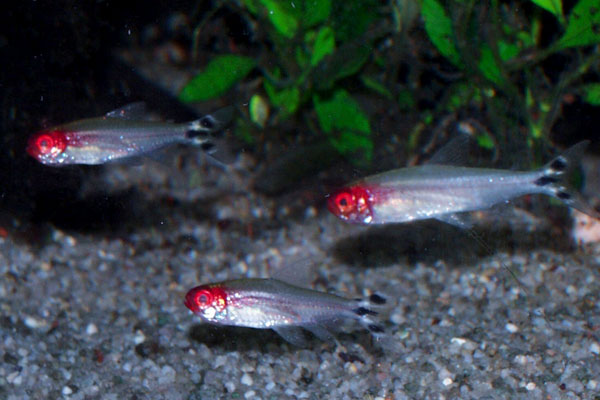

Species Profile | Images | Breeding Report | Similar Species

(Other members of the genus Hemigrammus)
ADULT SIZE: 5 cm
WATER CONDITIONS: Not critical
TEMPERATURE RANGE: 23-28 C
FOOD: Feed Hemigrammus bleheri small live-foods and fine grade dried foods
DISTRIBUTION: This species comes from Brazil
SEXUAL DIFFERENCES: Both sexes have the same basic colouration, though, as is often the case with tetras, females are somewhat more rounded than males.
AQUARIUM CARE: The rummy nosed tetra is an easy species to keep; hardy and able to tolerate a wide variety of conditions. Most at home, though, in an Amazon rainforest type set up; well planted with soft, slightly acidic water, sunken bogwood, dimly lit, or shaded with floating plants.
Other species that fit into an Amazon biotope aquarium include tetras such as the neon or cardinal, and larger fish such as the discus or angel fish
BREEDING: Typical plant spawning species, that eats its eggs. Remove adults after spawning! Not easily bred.
Have you bred Hemigrammus bleheri? Why not fill in a breeding questionaire?, or examine existing Hemigrammus bleheri breeding reports
Other members of the genus Hemigrammus
Other characin species
Other species from Brazil

These tetras fit in well in an Amazon style biotope tank

...and in a well planted community tank
BREEDING: Typical plant spawning species, that eats its eggs. Remove adults after spawning! Not easily bred.
Have you bred Hemigrammus bleheri? Why not fill in a breeding questionaire?
Sorry no records.